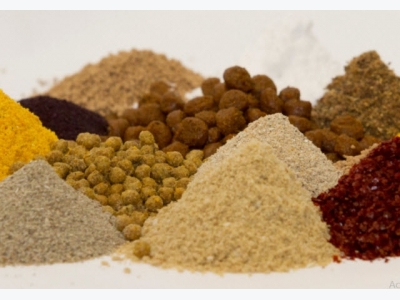Radical rethink over micronutrient requirements for farmed salmon

A new study suggests that farmed Atlantic salmon diets should contain four times the levels of niacin and twice the levels of vitamin B-6 compared to those previously recommended, due to the ever-decreasing marine content in most commercial salmon feeds.
Increasing levels of dietary supplements have been recommended. © TCFAT
The study, which involved scientists from Norway’s National Institute of Nutrition and Seafood Research (NIFES), points to the fact that more than 70 per cent of salmon feeds now comes from plants so supplements are increasingly important to maintain the growth and welfare of the salmon.
“Lack of micronutrients can be fatal for the fish. Too little of just one nutrient is enough to cause problems,” says Kristin Hamre, a NIFES senior scientist.
Farmed salmon feed has changed dramatically the last 10–15 years. While most of the feed was previously composed of fish meal and fish oil, most commercial salmon feeds now contain more than 70 percent plant ingredients. Plants contain anti-nutrients that can cause the fish to absorb less of the nutrients in the feed, and in some cases, the salmon therefore need different quantities of vitamins and minerals.
“Even if the plants contain these nutrients, the fish are unable to absorb them to the same extent as they would from marine feeds. Plant ingredients also contain lower levels of some nutrients than fish meal and fish oil do. That is why we need to adjust the amount of micronutrients,” says Hamre.
Since 2011, NIFES has been part of the EU project Arraina, the goal of which is to find out what levels of micronutrients different species of fish need now that the composition of the feed has changed. Norway and Scotland have collaborated on the salmon-related part of the project. It turns out that, for some of the vitamins and minerals studied so far, the old recommendations are far from what the fish actually need.
“When we first saw the results, we could hardly believe our eyes. For example, when the results for the B vitamin niacin came in, it turned out that salmon needs four times as much niacin as previously recommended, and twice as much vitamin B6,” says Hamre.
The old recommendations for micronutrients in feed were the result of trials conducted in the 1980s. The trials were largely performed on rainbow trout juveniles, and very few studies looked at salmon and adult fish. Through the Arraina project, NIFES scientists have created nutrient packages of all the micronutrients, which they have added in graded levels to the feed. They have tested it on both small fish in freshwater and smolt in seawater, and they are now conducting long-term studies on bigger fish.
The scientists are now working their way through the list of vitamins and minerals, and have so far covered vitamin C, vitamin E, eight different B vitamins and several minerals. They are using a method where they look for the level of all micronutrients in one and the same trial, instead of studying one at a time. They use biomarkers such as the concentration of vitamins in tissue, which is a very effective method that yields results quickly. It is a screening approach, and studies should be conducted of individual nutrients as a follow-up.
‘Previously, scientists could spend their whole career doing these types of studies. The new methods and tools mean that we get results much quicker. It is nonetheless our preliminary approach to the issue, in the future we will study selected nutrients in more detail. With increasing use of plant ingredients in the feed, it is important that we find the right supplementation of vitamins and minerals to ensure good growth and robust and healthy fish,’ says Hamre.
Arraina publications
Atlantic salmon (Salmo salar) require increased dietary levels of B-vitamins when fed diets with high inclusion of plant based ingredients
Antioxidant nutrition in Atlantic salmon (Salmo salar) parr and post-smolt, fed diets with high inclusion of plant ingredients and graded levels of micronutrients and selected amino acids
Related news
 Largemouth bass responses to supplemental EPA, DHA
Largemouth bass responses to supplemental EPA, DHA In recent years, the aquaculture industry has faced a rapid shift in raw materials used in feed formulations with a departure from marine-based to (largely)
 F3 takes on a new challenge – fish oil alternatives
F3 takes on a new challenge – fish oil alternatives Building off the success and excitement of the fish-free aquaculture feed cash-prize contest that concludes this fall, the F3 Challenge has set its sights
 Prevent disease outbreaks through effective bacterial pathogen control
Prevent disease outbreaks through effective bacterial pathogen control Aquaculture is the fastest growing food-producing industry and is currently playing a major role in global protein production.